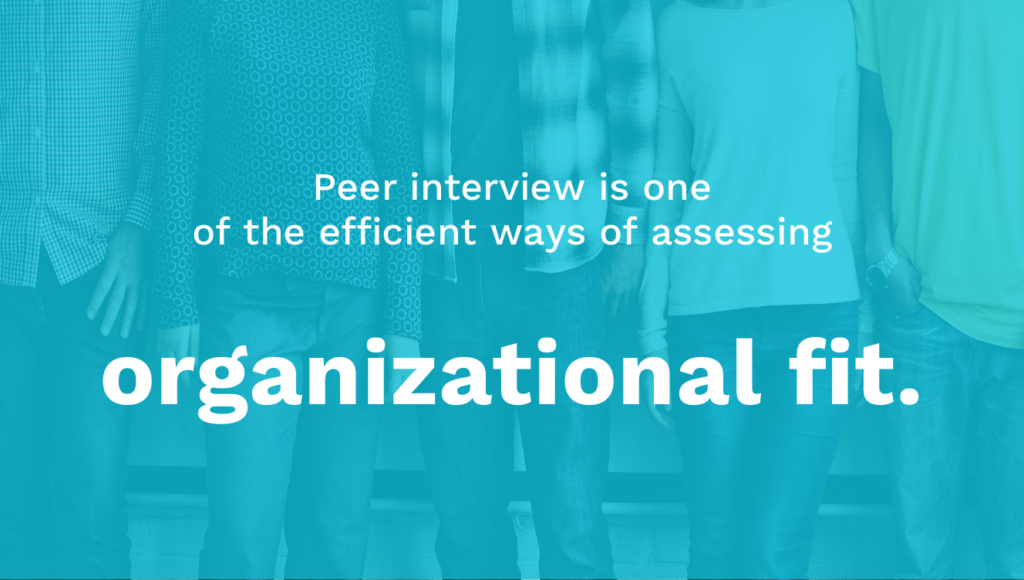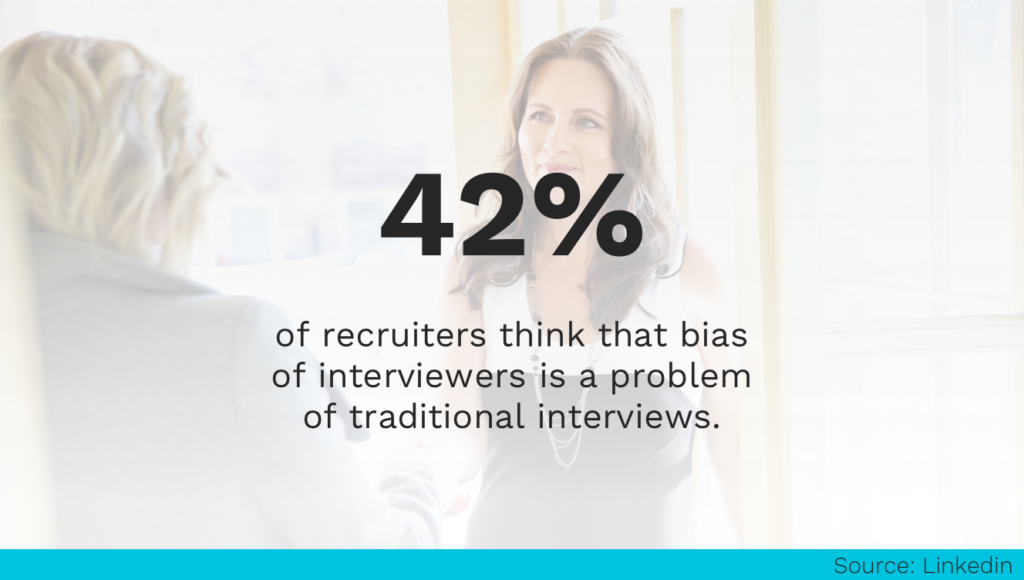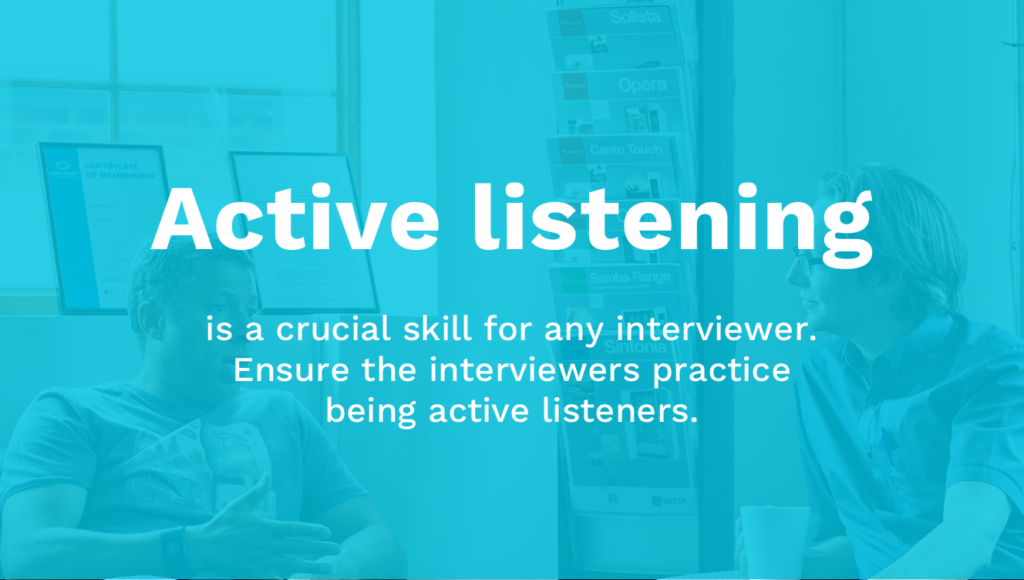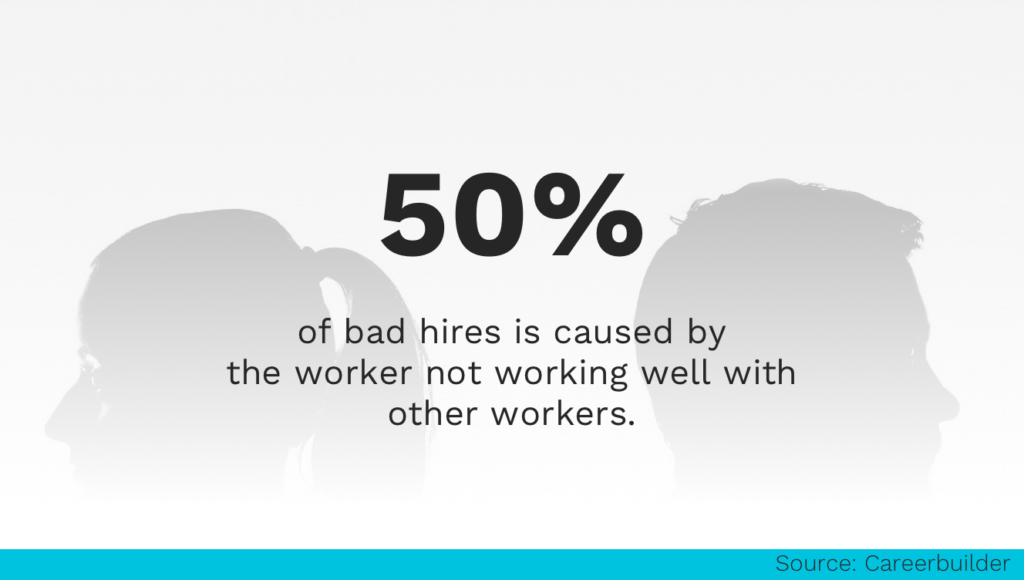There are dozens of new ways to get to know a candidate during the interview process.
From pre-employment assessments to automated video interviewing, the hiring process has become more and more digitized. However, even all these technological advancements can’t replace a traditional face-to-face interview.
The face-to-face interview is one of the best ways to truly get to know a candidate, particularly in how they’d mesh with the team they’re being hired for. While a hiring manager or recruiter usually controls this process, bringing members of the team into the hiring process can guarantee a stronger hire.
Peer interviewing has been gaining traction lately, and it’s not surprising why. Some of the biggest companies in the world, including Amazon, IBM, and Google have been working peer interviews into their hiring process.
However, peer interviewing doesn’t always have to be the right interview method for your company. So if you’re going to include a peer interview in your hiring process, you want to be sure that it will improve your candidate selection and that you’re doing it the correct way.
Let’s take a look at what peer interviewing is, how it can help (or hurt) your interview process, and how you can effectively work a peer interview into your next interview round.
What will you learn?
- What is a peer interview?
- What are the advantages of peer interviewing?
- What are the disadvantages of peer interviewing?
- How to create a peer interview process that works
Like what you see?
Don’t miss out. Subscribe to our monthly digest to get the latest TA and TM resources delivered right to your inbox.
What is a peer interview?
In a traditional interview process, a candidate would meet with a hiring manager or recruiter. In a peer interview, the candidate sits down with another employee(s) of the company.
A peer interview may be conducted by a supervisor for the position you’re looking to hire or someone who has held the position before. The peer holding the interview would then de-brief with a hiring manager or boss to share their thoughts on the candidate.
Using peer interviews is particularly popular for small companies or team-based companies who need to ensure a good cultural fit for each hire. However, larger companies also don’t shy away from this interview method.
Peer interviews can be used in all kinds of industries. While we already mentioned that it’s frequently used by some of the top tech names out there, it’s also very common in hospitals as well.
Listen to the complete guide to peer interviewing in our Recruitment On The Go podcast available on SoundCloud and iTunes!
What are the advantages of peer interviewing?
Peer interviewing can make it easier for you to identify the right candidate for the job. Here are some of the advantages a peer interview can bring to your hiring process:
Candidates and teams get a better feel for team fit.
While a hiring manager or recruiter has an idea of what kind of individual various teams need, no one understands a department’s dynamic better than the people already working on that team. A peer interview removes the middleman to allow the team to get to know different candidates, as well as discuss expectations, needs, and work styles to guarantee a better fit.
The team can not only assess whether or not a candidate is capable of doing the job but also if they are an organizational fit.
Candidates get to know the company.
Interviewing with multiple members of the team can give candidates different perspectives, opinions, and viewpoints about the company and the work that you do. This can ultimately help them make a better decision on whether or not the company is the right fit.
Peers can ask and answer more specific questions.
As a hiring manager or recruiter, it’s not possible for you to know each and every task that the new employee will need to perform. Handing the interview process off to someone who has held the role before or works closely with the team member you’re hiring can allow candidates to ask more specific questions and get better answers.
Candidates feel more at ease.
Interviewing with anyone can be a nerve-wracking process, but that anxiety is amplified when you’re face-to-face with the company CEO. A peer interview can eliminate some of that intimidation so candidates are more comfortable and more likely to be themselves.
The team gets excited about hiring.
When you get your team involved in the selection process, it can get them invested in who is ultimately hired. This gives them a sense of responsibility and importance, improving cooperation and getting the department more excited about bringing on a new member.
Peer interviewing is a way of connecting existing and future employees as well as bringing the team closer together.
What are the disadvantages of peer interviewing?
If not done correctly, peer interviewing could actually hurt your hiring process. Here are a few of the disadvantages of peer interviewing.
Peers need to be trained to interview.
Your employees may not know what they’re allowed and not allowed to ask during the interview process. To avoid any unprofessional or illegal questions, you’ll need to provide proper training. This adds additional work both for you and for the team members who would hold the interview.
Peers may unintentionally portray the company in a negative light.
If a peer seems unhappy or talks about an internal problem with the company, it could deter candidates from accepting an offer. Although it might not be intentional, peers might actually give the candidate the wrong impression about the company.
Peers might be overly biased.
The employee hosting your interview may infuse a subconscious bias into your interview process. If they connect with a specific candidate more than others, they may give that individual a better review even if they aren’t the right person for the team.
It is essential to make the interviewers aware of various forms of bias to ensure the right hire.
Peers might feel threatened by qualified candidates.
Employees who feel like their position is on the line might feel threatened by qualified candidates who they believe will outperform them if hired. This could prevent the peer from being objective during the interview process and may help advance a candidate that is less qualified.
Peers become less productive.
When employees need to take time out of their workday to participate in an interview, it results in a dip in productivity. This can be especially true if a peer is expected to engage with multiple candidates or if you want multiple employees to be a part of the peer interview process.
Including too many peers can feel overwhelming.
If a candidate isn’t expecting to talk to half a dozen employees when they come in for an interview, it can feel incredibly overwhelming. Including too many peers in your process can actually scare high-quality candidates away.
Stop guessing,
Start data-driven hiring.
Learn how you implement a modern candidate selection process, that is: streamlined, experience-driven and backed by data.

How to create a peer interview process that works
Peer interview process most often fails when employees aren’t given specific guidelines. To create a peer interview process that helps you find the best candidate for your open position, here are a few steps to follow.
1. Provide comprehensive interview training.
Before allowing an employee to interview a candidate, put them through an interview training process. Make sure each peer is aware of what is and isn’t okay to ask, and quiz employees on this before they conduct any interviews.
Make sure to review training consistently. Provide refreshers before each round of interviews and check back in with your employees to see if they have any questions.
Apart from getting training on interviewer bias, improving on the active listening front is also necessary to conduct successful peer interviews.
2. Create an interview structure.
While you want to give employees and candidates the freedom to discuss whatever feels natural, you don’t want to put all the control in your peer interviewer’s hands. There needs to be an established structure for the interview process.
Impose a time limit for the interviews and discuss what kinds of questions the employee might ask beforehand. While the structure doesn’t need to be strictly enforced, it does put some guide rails on the process that helps create some consistency between interviews.
3. Choose the right interviewers.
Although you might not be conducting the peer interview, you still want to be in charge. This means you should decide who is (and who isn’t) going to be in the interview room.
Select the right employees to partake in the interview process and ensure you’re not adding too many people. Choose employees who are enthusiastic and fully understand the duties of the open position.
Interviewers should prepare for the interviews accordingly, familiarize themselves with the candidates and know what they want to find out about them.
4. Make candidate requirements clear.
Make sure each peer involved in the interview process understands the requirements and expectations of the individual you’re looking to hire. Let them know that while their personal opinion is valuable, they’re not searching for their “mini-me”.
At the bare minimum, make each peer read the open job description before the interview begins. Discuss how bias can hurt the hiring process. If they’re unable to remove their personal feelings from the process, they may not be a good fit to hold an interview.
5. Establish a standardized evaluation process.
Just as you want there to be a process to the way a peer interviews, you also want to set a defined system for how they give feedback. A standardized evaluation process can create consistency in the way interviewees are rated.
A rating scale is a great way to get feedback on pre-defined areas for each candidate. You can then compare different evaluations across candidates to get a big picture view of who is the best fit.
6. Put peer interviews towards the end of the interview process.
The only candidates that go through your peer interview process should be individuals you can ultimately see hiring. Peer interviewing too early can be a waste of your team’s valuable time.
Put the peer interview process towards the end of your whole interview process. This can ensure employees take the interview process seriously and that they’re making the most of the time they’re investing.
7. Make it clear who has the final decision.
While you should absolutely take your employee’s feedback seriously, you don’t want to base your final hire choice solely on the feedback they provide. However, you also want to let your employees know how their opinions will be used in the final decision-making process.
Ultimately, your hiring managers and supervisors should decide who is hired but taking into consideration the team’s views on the candidates. Make the final decision maker clear early on in the process so everyone has realistic expectations.
It isn’t the wisest to ignore the opinions of your colleagues in the hiring process, as they will be the ones working with the new hire.
Conclusion
A peer interview is one of the best ways for both your team and the candidate to get a realistic idea of what working together could look like. Candidates are able to see what the job really entails while employees can determine if the individual is a good fit for the team.
However, when there isn’t a clear structure to the peer interviewing process, things can get messy. If your peer interviewers aren’t given proper guidelines, they may say or ask something they shouldn’t, give a negative image of the company, or otherwise push a high-quality candidate from accepting an open position.
Before you introduce a peer interview to your hiring process, establish requirements and expectations for all parties involved. While you may not be leading the actual interviews, it should still be a process that you control.
Remember to constantly evolve your process as you go. Try using peer interviews with your next hire, then take a look at how well the system worked. Make changes and then try again. You’re always free to adjust the system according to your company needs, the open roles, or the candidates you’re interviewing.
Stop guessing,
Start data-driven hiring.
Learn how you implement a modern candidate selection process, that is: streamlined, experience-driven and backed by data.







